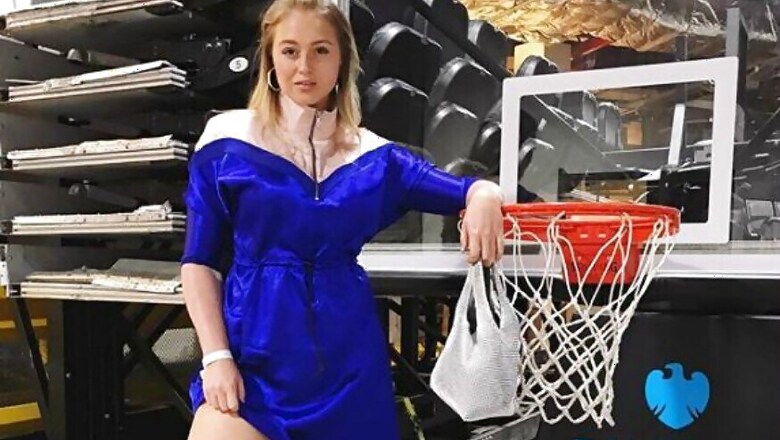
views
For years, images of impossibly slim, gorgeous, blemish-free women have filled fashion magazines, billboards and television screens.
Now, 26-year-old British model Iskra Lawrence is waging war on unattainable beauty standards in the fashion world, flexing her might on a social media fueling diversity. She is among a growing number of plus-size models finding fame and calling themselves body activists, promoting health and wellbeing. She also refuses to allow clients to photoshop any of her images.
"The whole concept of Photoshop is an illusion," Lawrence tells AFP during a rare spot of downtime before jetting off on her latest shoot, this time to a windswept beach in Iceland. "They're not flaws. They're part of your body. We were just convinced by society and the media that there was something wrong with them." In Britain, around 57 percent of women have an above average body mass index. In the United States, that figure rises to 62 percent, and the average American woman is a size 14-16.
Lawrence averages a US size 10 to 12, yet for years was told she was too fat to model. A sample size on the runway can be as small as zero. But change is afoot. Ashley Graham, who last year became the first "curve" model on the cover of the annual "Swimsuit Issue" of magazine "Sports Illustrated" is on the cusp of becoming a household name.
'Don't need to be perfect'
In February, she became the first curve model to walk for Michael Kors at Fashion Week. This season, she hosted a fashion awards night and Sunday night walked again for Prabal Gurung in a show with Gigi Hadid.
It's not just models. Popular culture is suddenly full of strong women proud of their curves from singers Adele and Beyonce to comedians Amy Schumer and Melissa McCarthy, and tennis star Serena Williams. Following repeated scandals about anorexia, French holding companies LVMH and Kering, which own dozens of top labels from Christian Dior to Saint Laurent, just days ago pledged to ban size zero models from their advertising and catwalk shows. Now based in New York, Lawrence jumps on a plane multiple times a week, has starred in campaigns for American Eagle and its Aerie lingerie line, and has close to four million followers on Instagram.
Six years ago, she says a London booker laughed in her face and told her she'd never get to New York to work.
"That hurt," she remembers. Since then, she was signed by JAG Models, an agency set up in 2013 to represent larger models, walked in New York Fashion Week and had a unretouched billboard in Times Square. "Seeing those images raw and real really helps people understand they don't need to be perfect and they're good enough as they are," she says.
Lawrence has also taken her message to schools in Britain and US colleges to promote good physical, emotional and mental health. At least 30 million people of all ages and genders suffer from an eating disorder in the United States, according to The National Association of Anorexia Nervosa and Associated Disorders.
'Definite transformation'
"Every day on social media, I get these DMs from girls saying I've saved their lives from eating disorders or suicidal thoughts. It's a wonderful, positive movement," Lawrence says.
Yet if seeing curvier models is more common, it is still relatively rare -- particularly in high fashion, where few of the most prestigious labels adequately cater to the plus-size market.
"There's still such a long way to go. A lot of people don't want a 'fat girl' in the show," says Jaclyn Sarka, who co-founded JAG Models in 2013, recognizing a need to represent beautiful women of all sizes. They now represent around 65 girls, the largest of whom is a size 20.
"That's just horrible. I'm having a daughter pretty soon and... I don't want my daughter to look up to people who aren't attainable." Lynne Webber, managing director of Marina Rinaldi, a leader in the luxury plus-size market and part of the Max Mara Fashion Group, agreed. "I think there is a definite transformation process," she says.
"I think in great part that is also due to the growth of social media, so it's a far more democratic channel of communication and that has given a lot more visibility for a lot more types of women." But the label, sold in more than 50 countries, would welcome a bit more competition.
"As champions, let's say, of female issues, we feel it's rather sad that premium brands feel they don't want to address that community of women," says Webber.



















Comments
0 comment